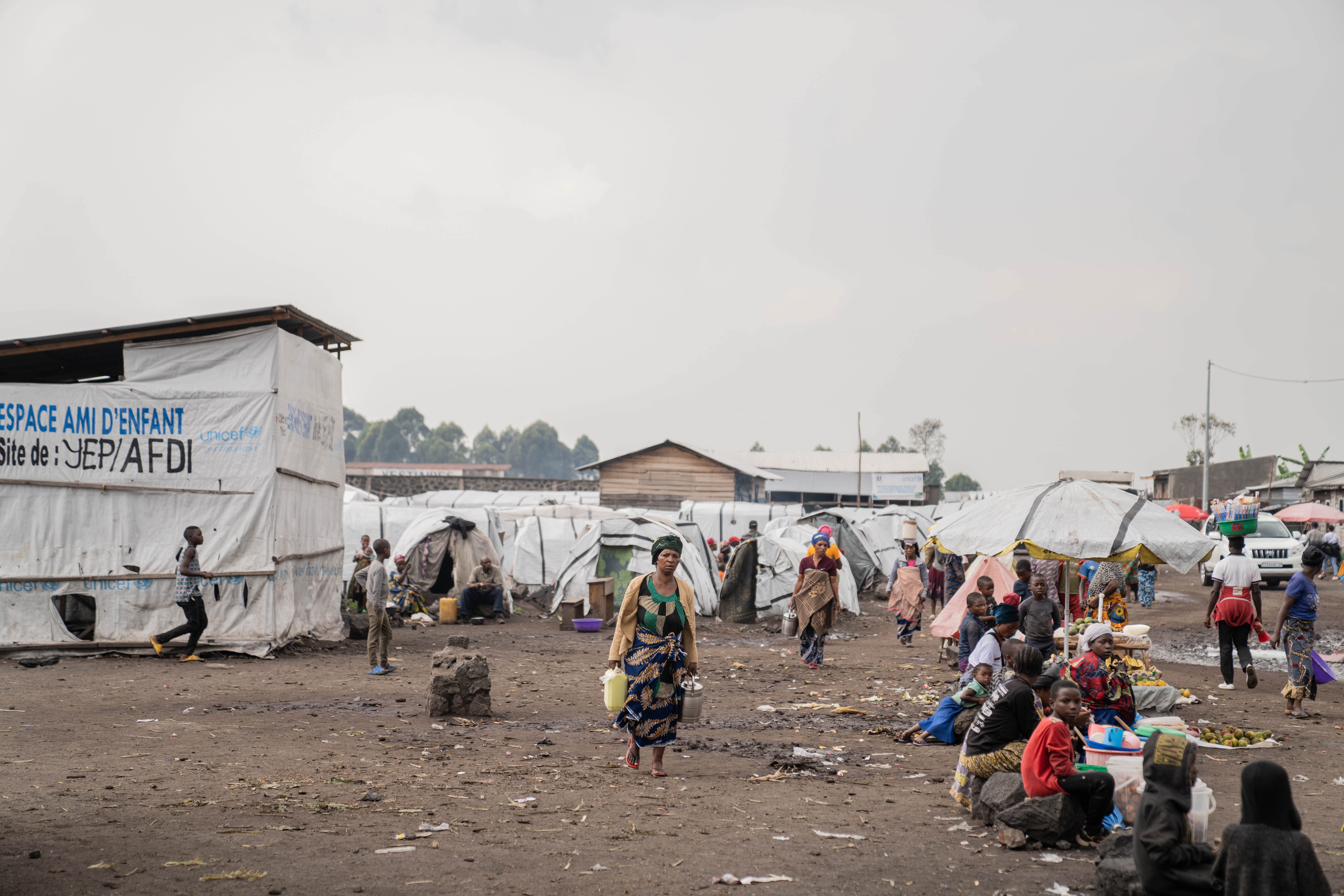Surviving sexual violence in eastern DRC – Doctors Without Borders

Report on Conflict-Related Sexual Violence and its Impact on Sustainable Development Goals in Goma
Violations of SDG 5: Gender Equality
The prevalence of sexual violence in and around Goma, North Kivu, represents a significant failure to achieve Sustainable Development Goal 5 (Gender Equality), particularly Target 5.2, which calls for the elimination of all forms of violence against women and girls.
- Health centers operated by Médecins Sans Frontières (MSF) in Goma report a continuous influx of female survivors of sexual violence of all ages, indicating a systemic and ongoing crisis.
- The personal testimony of “Nasha,” a survivor from Masisi, exemplifies the devastating impact of this violence. After being displaced by conflict, she was sexually assaulted in a makeshift shelter, and her husband was murdered while trying to protect her.
- Women are systematically targeted in attacks on their shelters, whether in public spaces, rented rooms, or temporary plots, demonstrating a profound lack of security and a direct assault on their fundamental rights and well-being.
Erosion of SDG 16: Peace, Justice and Strong Institutions
The security situation in North Kivu directly contravenes the objectives of SDG 16, which aims to promote peaceful societies and provide access to justice for all.
- Persistent conflict from 2021 to 2024 has created an environment where violence is endemic, undermining Target 16.1 (Significantly reduce all forms of violence and related death rates everywhere).
- The forced dismantling of displaced persons’ camps in February 2025 by the M23/AFC armed group illustrates the weakness of state institutions and their inability to protect vulnerable civilian populations.
- The frequent, unpunished attacks on shelters and the murder of civilians highlight a complete breakdown of law and order and a lack of accountability for perpetrators, creating a climate of impunity.
Impact on SDG 3 (Good Health) and SDG 11 (Sustainable Communities)
The crisis has severe consequences for public health and urban sustainability, creating major setbacks for SDG 3 and SDG 11.
- Inadequate and Unsafe Housing (SDG 11): Following the destruction of camps that housed some 650,000 people, a severe housing crisis has emerged. Displaced persons are forced into precarious living situations, such as school courtyards or low-cost rentals, which fail to meet Target 11.1 for access to adequate, safe, and affordable housing. These locations have become frequent targets for violent attacks.
- Barriers to Health and Well-being (SDG 3): The physical and psychological trauma resulting from sexual violence places immense strain on survivors and health systems. While organizations like MSF provide critical care, the scale of the need underscores a public health emergency that challenges the goal of ensuring healthy lives and promoting well-being for all.
- Forced Displacement and Lack of Durable Solutions: The inability of displaced populations to return to their homes in territories like Masisi due to lack of resources or land seizure prevents the re-establishment of stable communities and perpetuates a cycle of vulnerability and dependency.
1. Which SDGs are addressed or connected to the issues highlighted in the article?
-
SDG 5: Gender Equality
The article’s central theme is the prevalence of sexual violence against women and girls in Goma. It explicitly states, “Every morning female survivors of sexual violence of all ages gather at health centers,” and details the story of Nasha, who was attacked by armed men. This directly relates to the goal of achieving gender equality and ending all forms of violence against women.
-
SDG 16: Peace, Justice and Strong Institutions
The violence described is a direct result of “persistent conflict in North Kivu.” The article highlights a breakdown of peace and security, where armed groups operate with impunity, attacking civilians in their shelters and killing them, as seen when Nasha’s husband was “shot him dead.” This points to a failure of institutions to protect citizens and reduce violence, which is the core of SDG 16.
-
SDG 11: Sustainable Cities and Communities
The article describes a massive displacement crisis, with people forced to leave camps and unable to return home. They end up in precarious living situations, such as “the courtyard of a school where we built a shelter” or “low-cost housing in Goma.” The frequent attacks on these shelters demonstrate a critical lack of safe and adequate housing, a key component of SDG 11.
-
SDG 3: Good Health and Well-being
The physical and psychological trauma resulting from sexual violence necessitates a health response. The article mentions that survivors “need healing, support, and to be heard” and gather at “health centers where MSF works.” This connection highlights the need for access to essential healthcare services for victims of violence, which falls under the scope of SDG 3.
2. What specific targets under those SDGs can be identified based on the article’s content?
-
Target 5.2: Eliminate all forms of violence against all women and girls in the public and private spheres.
This target is directly addressed. The article details sexual violence against women (“Armed men broke in… They attacked me”) occurring in what should be private spheres (shelters, rented rooms). The fact that these attacks are “frequent” shows a systemic failure to protect women from violence.
-
Target 16.1: Significantly reduce all forms of violence and related death rates everywhere.
The article provides a clear example of a violence-related death with the murder of Nasha’s husband, who was “shot him dead.” The overall context of “persistent conflict” and “frequent” attacks on shelters indicates high levels of violence and a failure to meet this target.
-
Target 11.1: Ensure access for all to adequate, safe and affordable housing.
The article demonstrates a complete lack of safe housing for displaced persons. After camps were dismantled, people moved to shelters in school courtyards and other public places, which are described as unsafe due to “frequent” attacks by armed men. This directly contravenes the goal of providing safe housing.
-
Target 3.8: Achieve universal health coverage, including access to quality essential health-care services.
The presence of MSF providing services for survivors of sexual violence implies a gap in the provision of essential healthcare by the state. The article states that survivors “gather at health centers where MSF works” because they “need healing, support, and to be heard,” indicating a critical need for specialized health services that are not universally accessible.
3. Are there any indicators mentioned or implied in the article that can be used to measure progress towards the identified targets?
-
Indicator 5.2.2: Proportion of women and girls subjected to sexual violence by persons other than an intimate partner.
The article implies a high proportion of women are affected. Nasha was attacked by “armed men,” not her partner. The statement that her story is “far from unique” and that “Every morning female survivors of sexual violence of all ages gather at health centers” suggests that this is a widespread problem that could be measured by tracking the number of such cases.
-
Indicator 16.1.1: Number of victims of intentional homicide.
The article provides a specific instance of intentional homicide: “When my husband tried to protect me, they shot him dead.” The number of such deaths within the conflict zone is a direct measure of progress (or lack thereof) towards reducing violence.
-
Indicator 11.1.1: Proportion of urban population living in slums, informal settlements or inadequate housing.
The article describes the living conditions of displaced people in detail: “we moved to the courtyard of a school where we built a shelter.” These are informal settlements and inadequate housing. The text mentions “Large numbers of people” are in this situation after some 650,000 were displaced from camps, providing a qualitative indicator of the scale of the problem.
-
Indicator 3.8.1: Coverage of essential health services.
The article implies a lack of coverage. The fact that an international NGO (MSF) is providing essential health services for “female survivors of sexual violence” indicates that the local or national health system is unable to meet this need. The number of women seeking help from MSF can be used as a proxy indicator for the gap in essential service coverage.
4. Table of SDGs, Targets, and Indicators
| SDGs | Targets | Indicators |
|---|---|---|
| SDG 5: Gender Equality | 5.2: Eliminate all forms of violence against all women and girls in the public and private spheres. | 5.2.2: Proportion of women and girls subjected to sexual violence by persons other than an intimate partner (Implied by reports of attacks by “armed men” and the statement that “Every morning female survivors…gather at health centers”). |
| SDG 16: Peace, Justice and Strong Institutions | 16.1: Significantly reduce all forms of violence and related death rates everywhere. | 16.1.1: Number of victims of intentional homicide (Mentioned with the murder of Nasha’s husband who was “shot him dead”). |
| SDG 11: Sustainable Cities and Communities | 11.1: Ensure access for all to adequate, safe and affordable housing. | 11.1.1: Proportion of urban population living in informal settlements or inadequate housing (Implied by descriptions of displaced people building shelters in school courtyards and other public places). |
| SDG 3: Good Health and Well-being | 3.8: Achieve universal health coverage, including access to quality essential health-care services. | 3.8.1: Coverage of essential health services (Implied by the fact that an NGO, MSF, is providing essential health services for survivors, indicating a gap in universal coverage). |
Source: doctorswithoutborders.org

What is Your Reaction?
 Like
0
Like
0
 Dislike
0
Dislike
0
 Love
0
Love
0
 Funny
0
Funny
0
 Angry
0
Angry
0
 Sad
0
Sad
0
 Wow
0
Wow
0



































































![[COPY] Women Are Quitting. WTF Is Happening? – Substack](https://substackcdn.com/image/fetch/$s_!XkPN!,w_424,c_limit,f_auto,q_auto:good,fl_progressive:steep/https://substack-post-media.s3.amazonaws.com/public/images/16c48462-ec27-40d9-8bd9-bf8a0efa0cc0_756x836.png?#)











